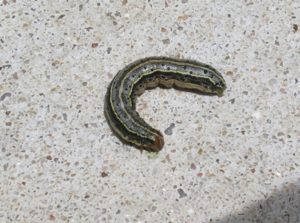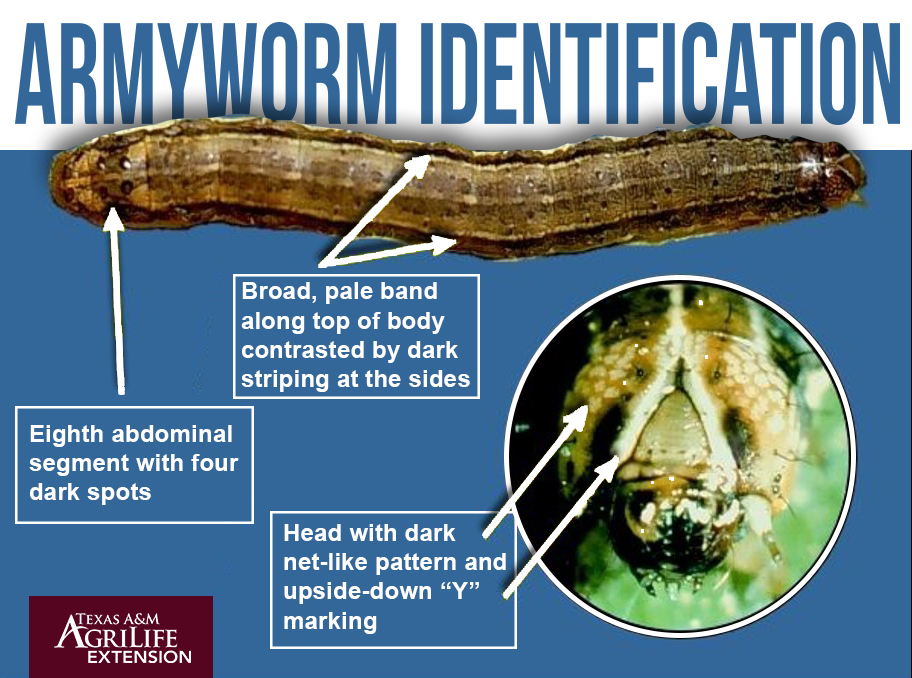
An armyworm can be light tan to light green with a brownish-black head.
Fall armyworm larvae, or caterpillars, are light tan to light green with a brownish-black head. These caterpillars have a white line between their eyes that forms an inverted Y-shape. Larvae have yellowish and black banding along their body as well as four large spots at the end of the abdomen. Adults are small moths with a wingspan of 1.5 inches with mottled brownish-grey wings.

These caterpillars have a white line between their eyes that forms an inverted Y-shape.
Fall armyworms overwinter in the pupal stage in south Texas. Once adults emerge from the pupal stage, they migrate northward during spring as temperatures rise. Larvae feed for about 2-3 weeks and then enter soil to pupate.
Many Types of Plants Attacked
Armyworms attack many types of plants. Small larvae feed on the green layer of leaves, causing a windowpane effect while larger larvae completely strip leaves. The last two larval stages eat about 85% of the total foliage consumed. Fall armyworms feed any time during the day or night but are most active in early morning or late evening. Fall armyworms strip foliage from plants and then move onto a new food source. With high populations, larvae appear to march side by side to new food sources, thus giving them the name of armyworm.
Outbreaks Tied to Rain or Irrigation
Various predators help keep armyworm populations from becoming too large. Parasitoids, such as wasps or flies, lay their eggs in armyworm eggs and/ or larvae causing death of the developing egg or larvae. Predators, such as ground beetles, also help reduce armyworm numbers by eating larvae. Many other animals like birds, skunks, and rodents consume large numbers of armyworms. Even with these natural controls, there are certain conditions that can cause outbreak populations. Typically outbreaks occur for fall armyworms in late summer or early fall after heavy rain or irrigation.
Control Options to Fight Armyworm Attack
To determine if populations are high enough to justify control, count the number of armyworms in a square foot for 8 different areas. Thresholds for lawns can vary, but treatment should be considered when there are 3 or more larvae per square foot. Look for products labeled for armyworms for use on lawns or turf. Active ingredients may include Bacillus thuringeinsis var. kurstaki, spinosad, bifenthrin, cyfluthrin, carbaryl, or permethrin.
For more information or help with identification, contact Wizzie Brown, Texas AgriLife Extension Service Program Specialist at 512.854.9600.
Additional Resources
Armyworms in Turfgrass article by Insects in the City
